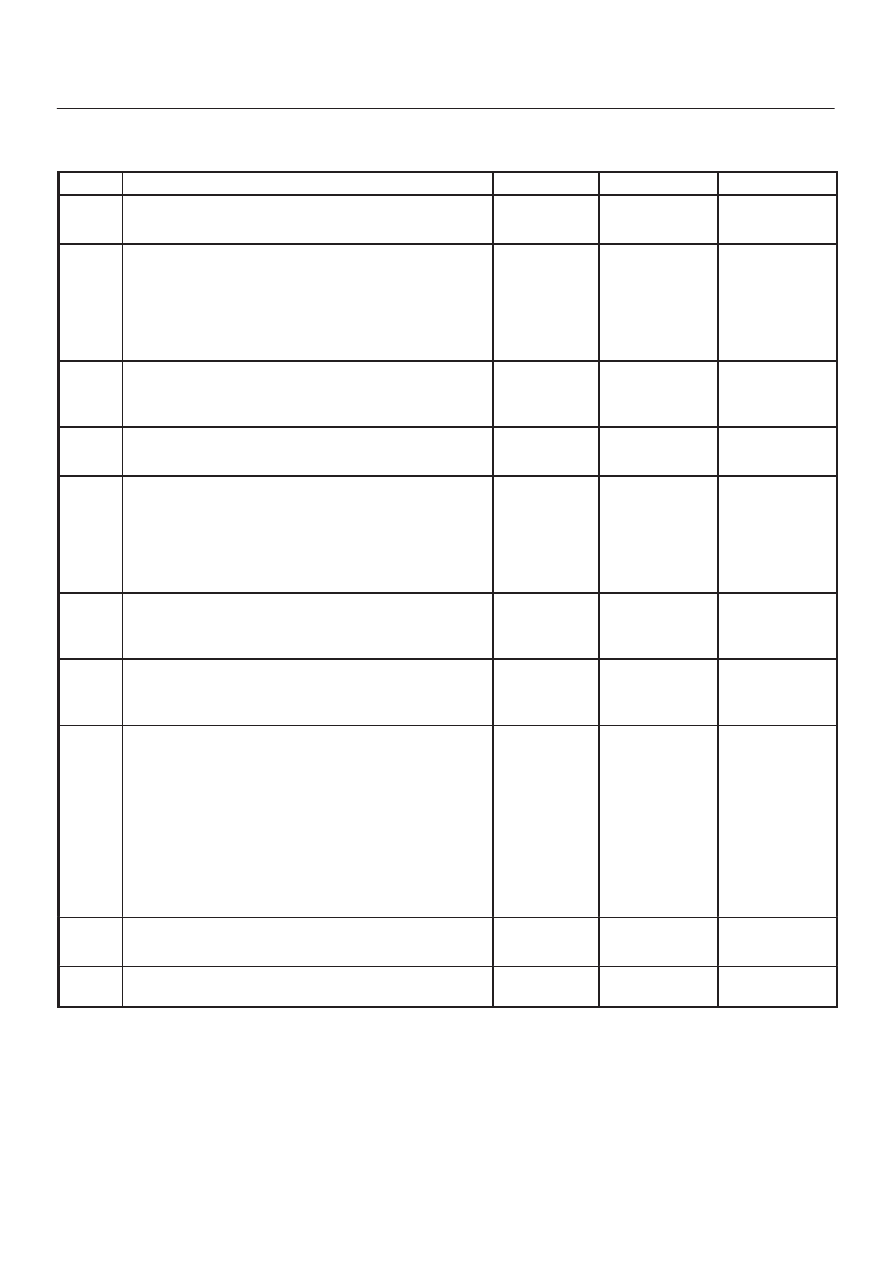Isuzu Trooper (1998-2002 year). Manual - part 436

6E–114
6VE1 3.5 ENGINE DRIVEABILITY AND EMISSIONS
Fuel System Diagnosis
(Cont'd)
Step
No
Yes
Value(s)
Action
8
Replace the fuel pump.
Is the action complete?
—
Verify repair
—
9
1. Disconnect the vacuum hose from the fuel pressure
regulator.
2. With the engine idling, apply 12-14 inches of
vacuum to the fuel pressure regulator.
Does the fuel pressure indicated by the fuel pressure
gauge drop by the amount specified?
21-105 kPa
(3-15 psi)
Go to
Step 10
Go to
Step 11
10
Locate and repair the loss of vacuum to the fuel
pressure regulator.
Is the action complete?
—
Verify repair
—
11
Replace the fuel pressure regulator.
Is the action complete?
—
Verify repair
—
12
1. Run the fuel pump with the Tech 2.
2. After pressure has built up, turn off the pump and
clamp the supply hose shut with suitable locking
pliers which will not damage the hose.
Does the fuel pressure indicated by the fuel pressure
gauge remain constant?
—
Go to
Step 13
Go to
Step 15
13
Visually inspect the fuel supply line and repair any
leaks.
Was a problem found?
—
Verify repair
Go to
Step 14
14
Remove the fuel tank and inspect for leaky hose or
in-tank fuel line.
Was a problem found?
—
Verify repair
Go to
Step 8
15
1. If the pliers are still clamped to the fuel supply hose,
remove the locking pliers.
2. With suitable locking pliers, which will not damage
the hose, clamp the fuel return line to prevent fuel
from returning to the fuel tank.
3. Run the fuel pump with the Tech 2.
4. After pressure has built up, remove power to the
pump.
Does the fuel pressure indicated by the fuel pressure
gauge remain constant?
—
Go to
Step 11
Go to
Step 16
16
Locate and replace any leaking fuel injector(s).
Is the action complete?
—
Verify repair
—
17
Is the fuel pressure indicated by the fuel pressure
gauge above the specified limit?
376 kPa
(55 psi)
Go to
Step 18
Go to
Step 21